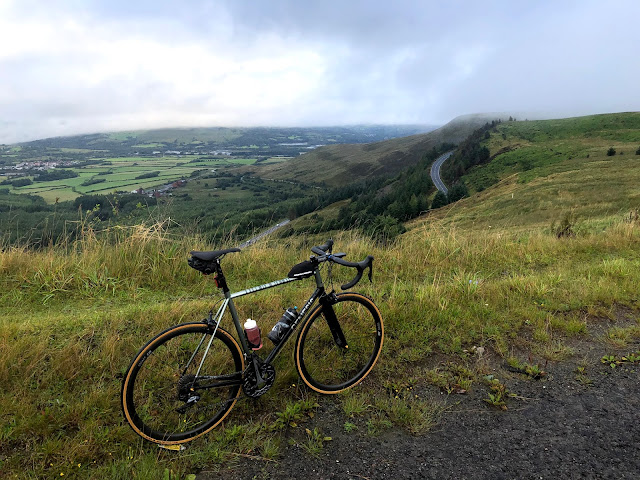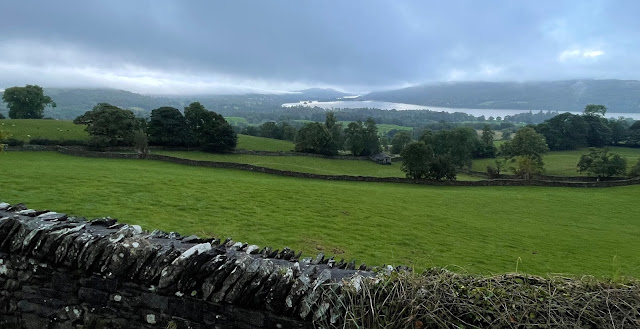RIDES: Valley Life
"I absolutely want to visit the in-laws" isn't something you hear from many people. Due to COVID ruining our family holiday plans to visit Annecy and the Alps, we had to find a Plan B, so a visit to see the missus' family in South Wales was on the cards. I say 'in-laws', we aren't married (although after 21 years we should be) and it's her brother we visit, so not all bad, although my liver usually protests after the standard first night of catching up over beers.
The massive bonus of visiting him is he lives at the end of the Rhondda Valleys, near Treorchy. The Valleys are wonderful; steep-sided, impressive and although fairly heavily populated along the valley floors, once you head upwards you're in a relatively car-free cycling paradise.
Usually when we visit it's just for a weekend so I manage just a quick ride but staying for a week meant I could explore. The two main climbs that feature in The Rhondda valleys are Rhigos and The Bwlch, two of my all-time favourites and ones that are enjoyed by cyclists from far and wide.
 |
| The sweeping bend of no98 Rhigos |
Rhigos is the gateway to the Brecon Beacons when heading out of the valley, but it's the other side coming back into Rhondda from Hirwaun (past the former Tower colliery site) that is most famous in cycling terms because of its place as no98 in the 100 Climbs book. Both sides are equally enjoyable; the more noted side is a set of long, exposed 6% drags followed by wide, sweeping hairpins that have an alpine-esque feel and offer views across the to Pen-Y-Fan, South Wales' highest peak. The side from Treherbert, at a shade under 4 miles, is half a mile longer but offers an additional 100ft of climbing on an equally impressive but more snake-like ascent that hugs cliff walls and passes dramatic waterfalls.
The Bwlch on the other hand, just down the valley from Rhigos, is a triptych of beautiful climbs; cyclists can attempt the wholly unofficial Les Cinglés du Bwlch, which apes the three ascents of Provence's Mont Ventoux in a day, although with a more modest amount of climbing (roughly 1,000ft each side) the Bwlch offers a different type of challenge. However, when you throw in the decidedly unpredictable Welsh weather it's not something to take lightly and can be a proper test of will. Each side is wonderful and I've said to friends that if I was given only one climb for the rest of my life, I'd not be unhappy if it was The Bwlch.
From Treorchy you're faced with a long 6% drag where there are few times you can't see the hill looming above you in the distance. The road twists around the massive bulk of the hill, exposed to the elements. As you approach the first hairpin you're looking at a gigantic scree escarpment and you could swear you're in Iceland, it's truly majestic. Head to the viewing point at the top and you see the signs for Nant-Y-Moel, and the right turn to Port Talbot and the Afan valley.
 |
| The Bwlch from Nant Y Moel - incredible. |
The longest route comes up the Afan valley, with the main 4.2 mile segment starting at Cymer, although if you head all the way down Port Talbot you can head through Pontrhydyfen for a 13-mile climb that takes in nearly 1,900ft of ascent. This is the route that I'd done previously on two editions of Dragon Ride and is probably the most gentle of the routes up, but still hard on the legs at an average of 5%.
The side I'd yet to try - that infamous Welsh weather had deterred me in the past - was the side from Nant-Y-Moel and no99 in the 100 Climbs book; 3.6 miles long, 1040ft of climbing at 6% average, this is a very different climb in terms of surroundings. Whereas the other sides are exposed and grand (Treorchy), and peaceful and snaking (Afan Valley), the side from the Ogmore Vale offers up a steep start through forest that brings the most amazing 180-degree hairpin at the the halfway point before you grind upwards alongside towering cliffs and over the top. It's a great climb and now I've done it, it's hard to pick a favourite, hence my earlier comment about it being a brilliant hill in general.
One thing to remember is that both the Treorchy and Nant-Y-Moel ascents require you to keep going upwards once you reach the junction near the car park; the whole climb carries on between cliffs and up onto moorland as you head to the actual highest point at a radio mast just before you decent into the Afan Valley. It's a popular route with bikers and a cut-through for motorists so be mindful of traffic. Plus, the weather can change immediately up there as you go from valley to valley, so it's worth having running lights on for visibility.
 |
| Signs at the base of climbs give a sense of welcome for cycling. |
I love the fact the Rhondda Cynon Taff council have installed signs at the base of the climbs with info about climb length and ascent. It's not quite the kilometre markers you get abroad but it's a nice touch to see cycling noted as a reason to go up the hill and gives that 'proper climb' feel.
Another slight side note, both Rhigos and The Bwlch offer superb road surfaces; maybe it's down to overuse as a main pass to Port Talbot and Bridgend requiring constant re-laying, or maybe the council just values giving us cyclists a smooth ascent. Whatever the reasoning, aside from cattle grids, there's little to detract from the climb aside from loose rocks from the mountain above. Oh, and the sheep, you have to keep an eye on them particularly on the descents - hitting one of those at 40mph would be bad news!
Through the week I was in the Valleys, I did a couple of rides that I'll write about later but if you're in the area and want to put together several thousand feet of climbing in a relatively short distance, then a Rhigos double or Bwlch triple (or a combo of both) will be up there with the best rides you'll be able to conjour up in the UK.



Comments
Post a Comment